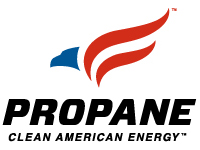
Propane Facts
Lots of people and businesses use propane every single day. How many? About 48 million households, according to the Propane Education & Research Council. As a clean, affordable and abundant fuel that’s domestically produced, its uses are many, its benefits varied.
Give yourself a few minutes to browse this page and learn all the ins and outs of propane. You might be surprised to see just how useful, environmentally friendly and economically responsible propane truly is.
Propane Uses
Between residential, commercial, industrial and agricultural applications, the list of things propane can be used for is a long one … and one that’s actually still growing. Here are just a few of propane’s innumerable uses.
- Space heating (boilers and furnaces)
- Water heating (hot water heaters, pool heaters and spa heaters)
- Cooking (grills, ovens and stovetops)
- Refrigeration (gas absorption refrigerators)
- Clothes drying
- Grain drying
- Power generation (standby, portable and mobile generators)
- Engine fueling (on-road vehicles, landscaping and construction equipment)
- Blowtorching
- Soldering
Propane Benefits
Propane offers countless benefits, but above all it provides S.H.E.E.R. comfort and peace of mind.
Safe: Propane is a nontoxic, nonpoisonous fuel that doesn't contaminate groundwater or soil. Propane tanks can be safely buried underground at home sites in areas that are beyond the natural gas main.
High-performance: Propane can easily fuel any of the high-performance amenities today's homeowners are demanding, while also reducing energy costs and emissions and increasing comfort, compared with heating oil or electric appliances.
Efficient: Propane-powered appliances and other propane applications deliver homeowners better value and comfort compared with most other energy sources, while also reducing overall energy costs.
Environmentally friendly: Propane is an approved clean alternative fuel under the Clean Air Act of 1990. It is a low-carbon alternative fuel that produces significantly fewer greenhouse gas emissions than most other energy sources.
Reliable: Propane is a proven energy source homeowners can count on, even when the electrical grid is down.




